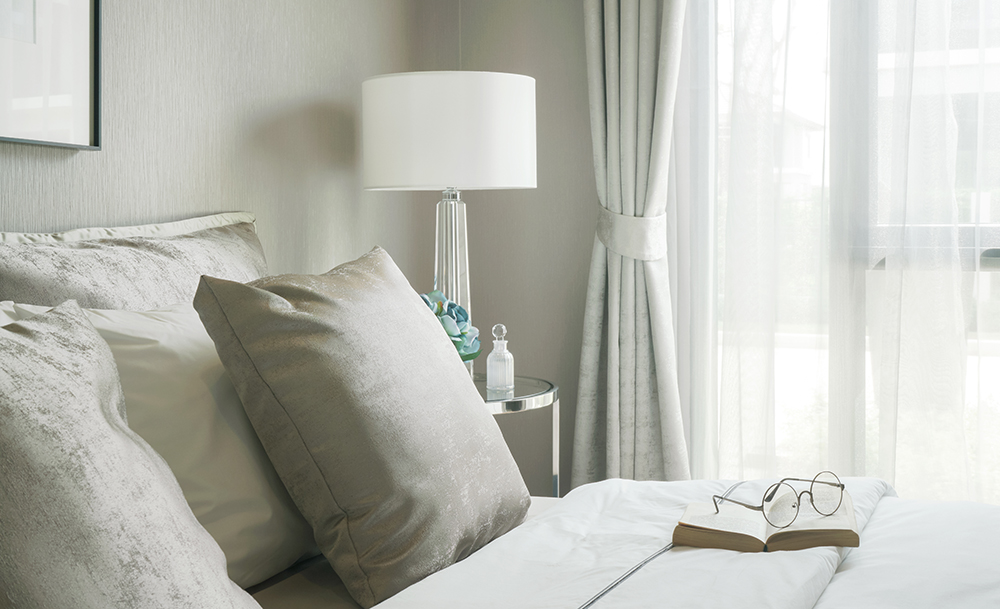We’re taking an in-depth look at the aesthetic side of installing energy efficient lighting such as LEDs in the home. In previous blogs we’ve explored the living room and kitchen and dining areas. In this latest instalment we move on to the bedroom.
So, how do you create that all-important cosy ambience using low-energy products? Lighting designer Graham Festenstein talks us through the dos and don’ts.
Ditch the bedroom lighting staple
Firstly, Festenstein believes that preconceptions of how bedroom lighting should be done are ripe for change.
He said: “Traditionally we just stuck a pendant in the middle of a bedroom. I would very rarely ever suggest that, though sometimes if it’s a guest room, and you don’t have so many guests, it’s not so important.
“Central pendant lights are often very flattening; it usually doesn’t create any sort of drama in the space. I would often recommend people work predominantly with floor and table lamps. That said, a nice decorative pendant can look great with a gentle glow, but with the practical light coming from elsewhere so that it doesn’t wash out the whole room.”

Different circuitry for a different mood
Dimmers are a must, he believes. And where budgets stretch to it, you might want to consider control systems where you can set a scene at the press of a button, or touch of your smart phone.
Not only does this ensure the right mood, it also helps reduce the amount of switches that need turning off, thereby offering another energy-saving gain. But getting the atmosphere right using lamps does require some technical considerations.
He explained: “On a new build, I would always recommend putting in five amp sockets, that goes for the living room as well. That facilitates being able to switch or dim table and floor lamps without having to go round each one. It also works really well with scene-setting, as the lamps become part of the scene.
“In fact, installing cable and sockets is not a huge cost, so it’s worth considering for a refurb as well.”
Ending bedtime light debates
Using scene-setting doesn’t have to be something applied right across the rooms – but it does have its practical advantages when used in the right places.
He advised: “Don’t use scene-setting so much in bedrooms other than your master bedroom. There, it can be really useful and enable you to balance the fact that two people might have their own light preferences, but will also want to turn off all light without getting out of bed.”
A little bit of thought during a refurbishment can end those night time lighting quandaries once and for all – leading to increased harmony all round.
He explained: “Lighting is a bit like painting, where you have a palette of materials, then you layer them. If you’ve got your five amp sockets and your floor lamps putting some soft, friendly light on the ceiling and walls, you would be able to set that up on a low level when you’re lying in bed reading a book for example. Enough light to read from a bedside light, but without the rest of the room being in complete darkness.
“Then when you get up and get dressed, you don’t need your bedside light any more, you want a good level of light, you might then use your floor and table lamps, with some down lighting as well. Three circuits in a bedroom would facilitate that.”
A simple solution
But if your budget doesn’t stretch to all that, or if you’re just looking to make smaller changes right now, Festenstein does offer a quick and easy option to improve bedroom ambience.
He explained: “At the very simplest, if you just want to improve the lighting as it stands, fit a dimmer to the central light and get bedside lights with dimmers on. That in itself will make a big difference if you haven’t got that at the moment.”
- get the most from lighting in your kitchen
- need advice on hall lighting? Read our blog
- everything you need to know about LED lights